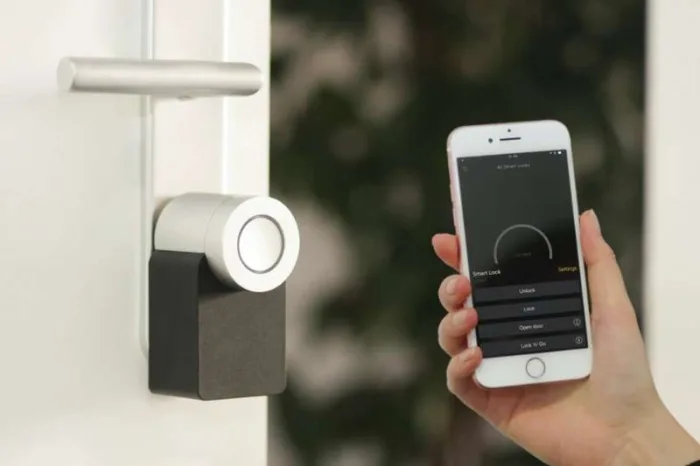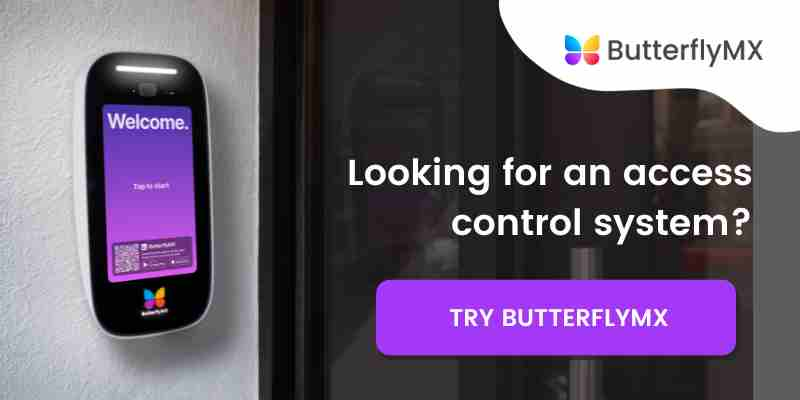Key takeaways
- Touchless access control systems enable users to unlock doors without physical contact, enhancing hygiene and convenience by utilizing wireless credentials like smartphones, key fobs, or facial recognition.
- These systems streamline property management by allowing remote access control, reducing the need for physical keys, and simplifying the process of granting or revoking access permissions.
- Implementing touchless access control enhances safety by minimizing shared touchpoints, thereby reducing the potential spread of germs and diseases within buildings.
- Smartphone-based access control solutions provide a cost-effective and user-friendly approach to modernizing building security and access management.
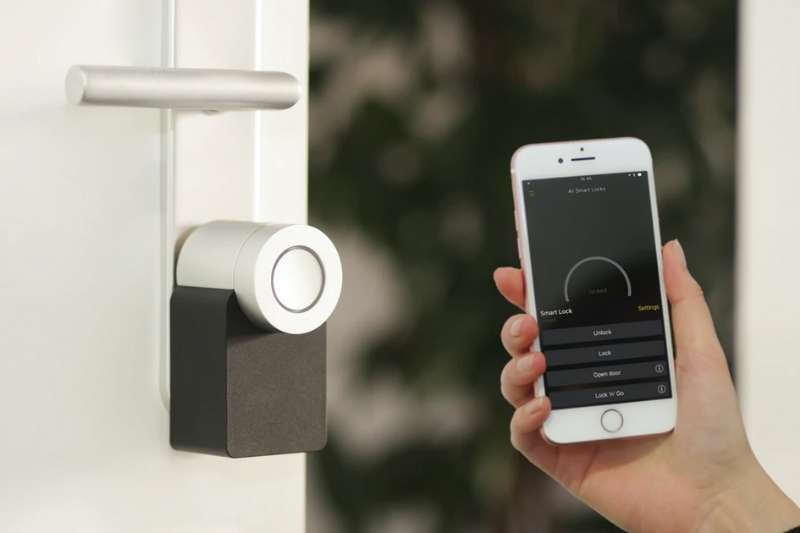
Touchless access control is one of the new trends sweeping the access control market. Health concerns introduced by the COVID-19 pandemic starting in 2020 emphasized the importance of hands-free building access. But aside from being more hygienic, what are the benefits of a touchless access control system? And is touchless access right for your property?
Read this post to find out why residential properties, office buildings, and even universities are embracing touchless access control.
This post covers:
- What is touchless access control?
- How does touchless access control work?
- Methods of touchless access control
- Why you should invest in touchless access control
- What is the best touchless access control system?
What is touchless access control?
Touchless access control is a form of access control that does not require a user to physically make contact with or insert their credential into a reader to gain door entry.
Consider the traditional key-and-lock system. To unlock a door with a physical key, you have to insert your key into the door’s locking mechanism. However, as many of us experienced during the COVID-19 pandemic, contagious diseases can be transmitted on shared surfaces like door locks and handles.
While some businesses changed their locking systems for increased safety during COVID, they found out that contactless access control came with many other benefits. Today’s technological developments — including inventions like wireless technology and Bluetooth — have rendered traditional keys and locks obsolete.
Touchless access control typically refers to just the “unlocking” portion of gaining entry into a building. Tenants may have to physically open a door they’ve just unlocked using a touchless access system. However, some systems offer a truly touchless experience by automatically opening doors after verifying access credentials.
Components of a touchless access control system
While there are a lot of different technologies that power touchless access control solutions, every system shares some similarities.
Touchless access control systems have four parts:
- Wireless credential. A wireless credential can take many forms. It can be a key fob, a smartphone-based QR code, or even just a resident’s face. All wireless credentials have this in common: There’s no need to touch a credential to a wireless credential reader.
- Wireless credential reader. Wireless credential readers vary depending on which credential a tenant is using to access the property. For example, a resident using a key fob might interact with a wireless reader that communicates using radio signals, while a resident using a facial recognition scanner interacts with a camera.
- Control panel. The control panel is a computer connected to the wireless credential reader. The control panel is the central hub of the access control system and stores and verifies each tenant’s credentials.
- Door release. After the control panel verifies the credentials, the control panel sends a signal to the electric door release. Some access systems are connected to touchless door openers that automatically open without the person touching the door.
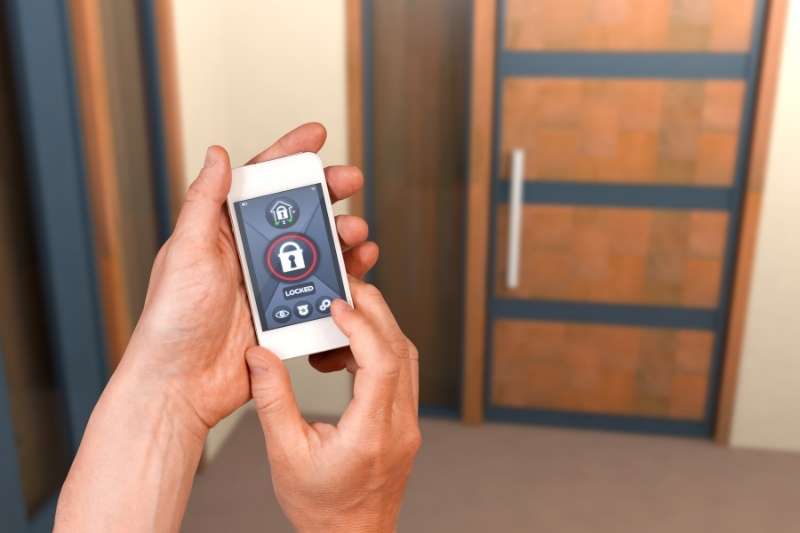
How does touchless access control work?
Touch-free access control works by establishing a touchless connection between a tenant’s credential and the access control system’s credential reader. The system then sends the credential’s information to the control panel to be verified and unlocks the door — providing access to the property without any physical contact.
Touchless access systems operate on a variety of different technologies. Readers can establish connections with credentials using Bluetooth, radio waves, or the internet.
There are also many options for touchless access control credentials, including:
- Certain kinds of key cards and fobs
- Smartphones
- Facial recognition scanning
Watch how touchless access works with ButterflyMX:
Do key cards and key fobs count as touchless access?
It depends on the type of key card or key fob you’re using. With some key card readers, you have to actually insert the card into the reader. These would not be classified as touchless access.
However, with key fobs and some key cards, all you have to do is hold your credential a few inches away from the reader. The reader then verifies that credential wirelessly. These types of cards and fobs count as touchless access.
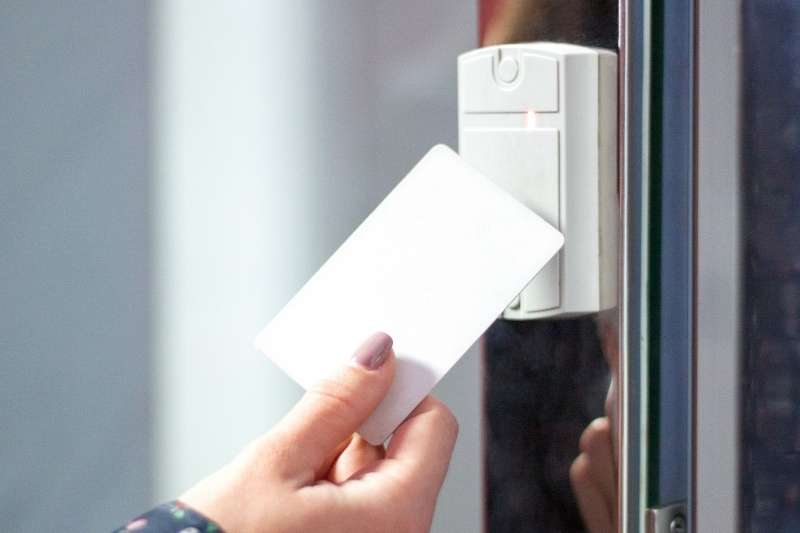
Methods of touchless access control
Read on to explore different kinds of ways buildings use touch-free access control systems.
Here are three examples of touchless access control:
1. Proximity cards
True to their name, proximity cards only have to be held in close proximity to a reader. Most proximity cards use RFID technology. In contrast, other kinds of key cards must be physically inserted into a reader.
There are two types of proximity cards: active and passive. The difference is in how a proximity card gets the power it needs to send out a signal. In both cases, proximity cards use radio waves to establish a wireless connection to the credential reader.
2. Smartphone-based
Smartphone-based mobile access control systems are the most cost-effective option for property owners. In a mobile access control system, residents use their smartphones to gain access.
When residents can use their phones instead of proximity cards or key fobs, your staff no longer has to deal with the headache of continually replacing lost cards or fobs. And, you’ll save money because you don’t have to shoulder the cost of all those lost cards.
3. Facial recognition
Facial recognition technology is an alternative verification method in which a person’s face acts as the access credential. No two faces are exactly the same. For example, the distance between a person’s eyes, or the length of their nose, are data points that an access control system can use (along with many others) to verify a person’s identity.
The concept of a hands-free access control system is also known as “frictionless access control.” Although facial recognition access might be convenient for residents, this technology is usually found in high-security office access control systems and is too cost-prohibitive for most multifamily property owners. Additionally, it introduces privacy concerns for many users.
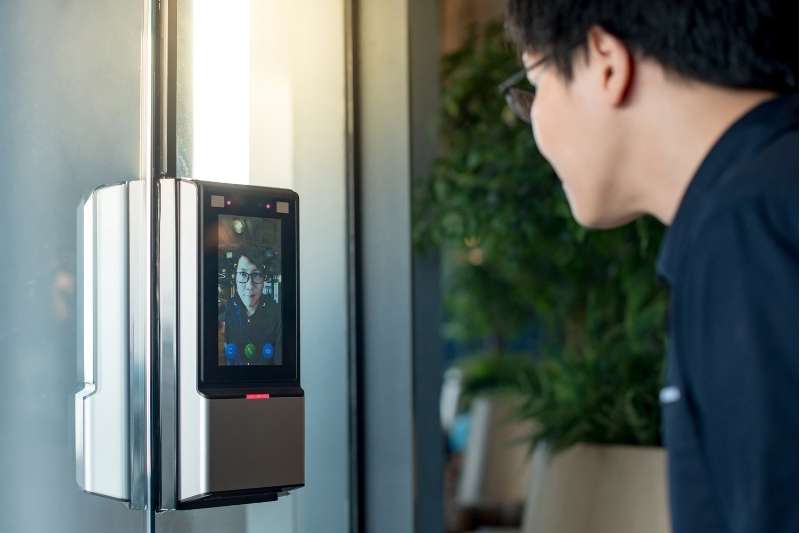
Why should I invest in touchless access control?
No matter what method of touchless access control you invest in for your building, your staff, tenants, and visitors will benefit. Touchless access control is more convenient, simplifies administration, and increases safety for all users.
More convenient
It’s much easier to hold a card up to a scanner than it is to fumble around with a key. And even more convenient than a keycard system is a mobile system where residents can gain access with just a tap on their smartphones.
Some systems even allow users to open doors with voice commands like Siri and Alexa. Residents coming back with armfuls of groceries will appreciate a hands-free access control system.
Easier administration
Traditional key-based systems are cumbersome and create too much work. But touch-free access control systems replace outdated keys with credentials that are easier and faster to manage.
For the most streamlined experience, choose a touchless access system with a web-based dashboard. That way, you and your staff can access an audit trail of all door release events and instantly change access permissions for tenants. That’s easier — and cheaper — than going out and getting keys pressed and repressed as residents move out or lose theirs.
Increased safety
With a touch-free access system, your residents will be safer in two big ways.
First, the system’s audit trail of time- and date-stamped photos allows staff to better monitor who’s entering the building.
Second, touchless access systems reduce the number of shared surfaces that residents, visitors, and staff have to touch. This helps prevent the spread of germs and disease.
What is the best touchless access control system?
The best touchless access control systems provide maximum convenience to residents and staff while minimizing costs to property owners.
While they may appear convenient for users, facial recognition systems are expensive and create privacy concerns. And proximity card systems are inconvenient for everyone: Residents are prone to losing or forgetting their fobs, and property staff faces the time and expense of constantly ordering and programming new cards.
Get the most bang for your buck by investing in a smartphone-based, mobile access control system like ButterflyMX.
ButterflyMX makes touchless access simple. From a mobile app on their own smartphones, residents can quickly swipe to open doors. They can also use voice commands to gain entry. Residents who pair Siri or Alexa don’t even need to have smartphones in their hands to open doors.
To create a completely touchless access experience with ButterflyMX, all you need is the video intercom system and an automatic door.
